Subwoofers from the American company SVS are constantly on everyone’s lips in the States, the brand’s popularity is growing in Europe, and in our country, this brand is increasingly mentioned when talking about searching for a decent subwoofer. I was brought the SVS SB-3000 model for testing, made in a “closed box” acoustic design and equipped with a newfangled Bluetooth control option.
For those interested, SVS was originally a very small company founded in the late 1990s in Ohio, USA. It sold its products directly over the Internet and promoted them through enthusiastic connoisseurs. However, things went so well that today it is a large company with dealers all over the world, including Russia.
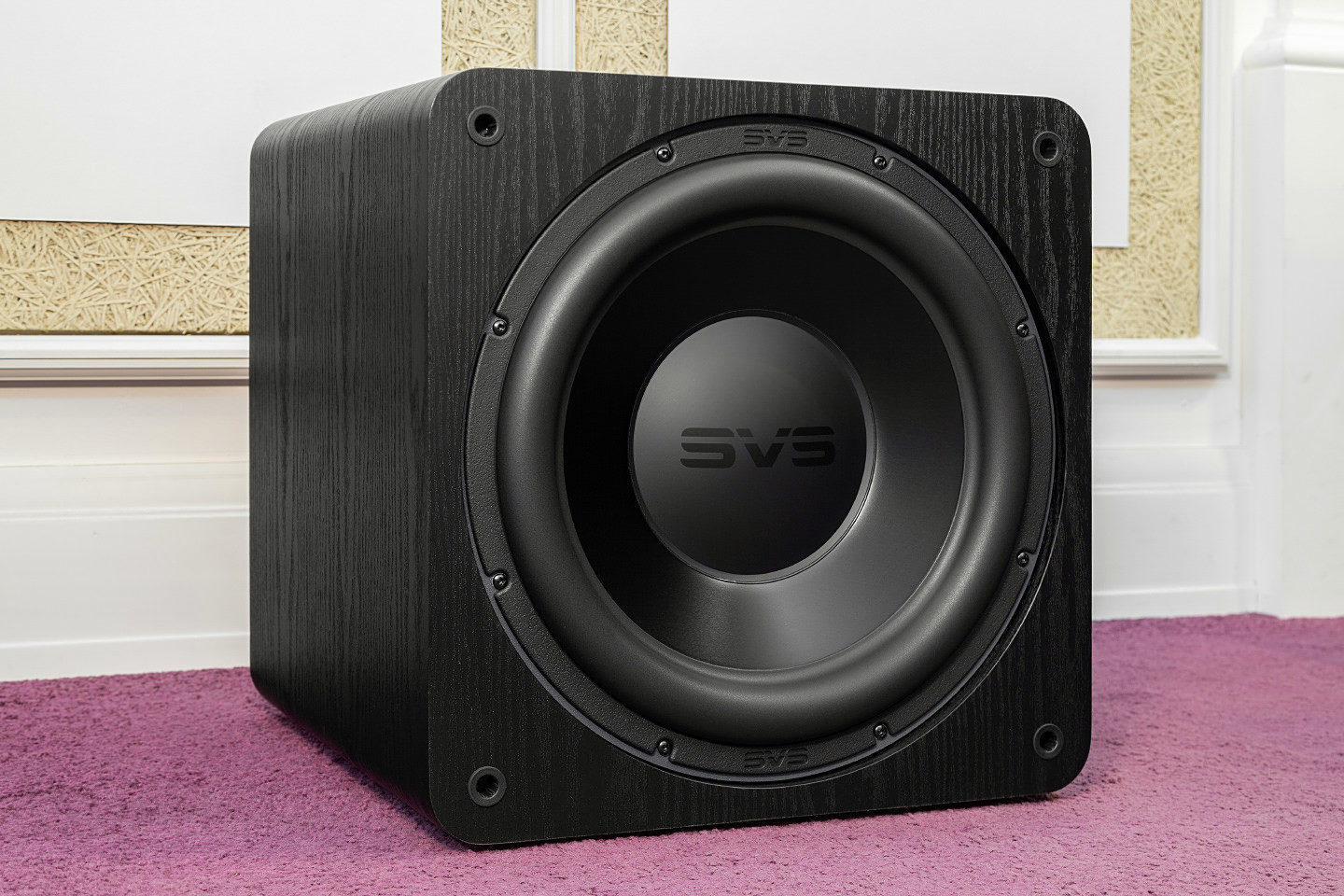
I remember that the first SVS subwoofer came to me about 10 years ago, and it was really a revelation. A pure cinema subwoofer, a very simple, inexpressive design, but how it sounded LFE tracks from DVD! And the price at that time was very attractive – in general, I almost bought it. At that time, no one knew this brand in Russia, and this was the first attempt to distribute it here. Today, the situation is different: the brand has a reputation and it is more than solid.
What’s inside?
The Fresh 3000 series consists of two models. The PB index is a phase inverter case, and the second model of the series, SB (closed case), is where the test was held. The first option is traditionally capable of providing more bass, the second is considered audiophile and “correct”. The company itself states that it “achieved an incredible level of reproduction from a case of such dimensions”, which further fuels interest in the model. What’s inside?
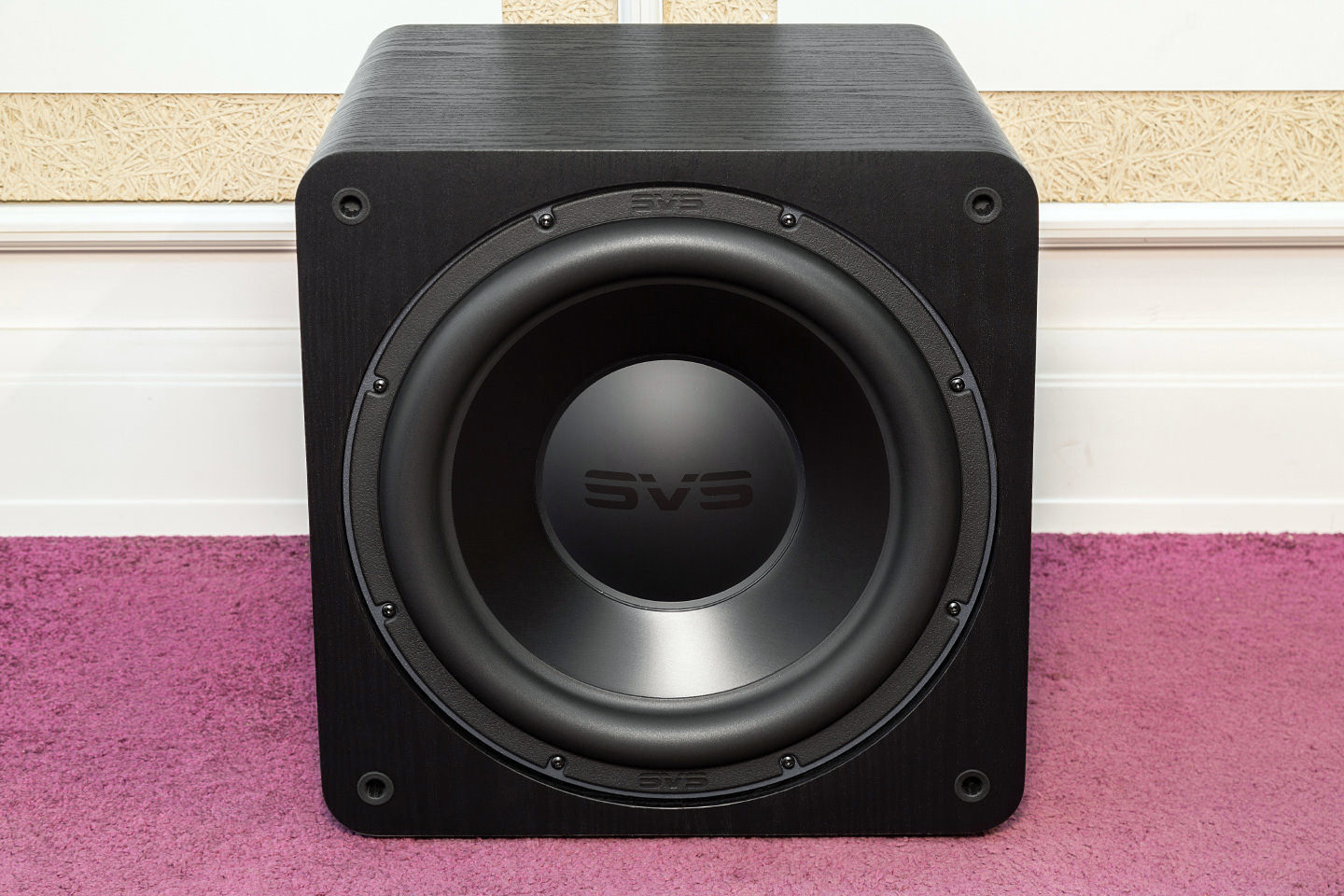
Firstly, it is a completely new 13-inch (non-standard size, right?) speaker with an aluminum diffuser, two ferrite magnets, and a voice coil with two windings, wound with a wire with a flat cross-section. Naturally, a special long-stroke suspension and the “long-stroke” of the speaker is clearly emphasized by a curved metal grill. The grill itself causes controversial feelings in terms of aesthetics, but it can be removed. Moreover, the bright blue LED on the front panel is no longer there – nothing will distract from viewing.
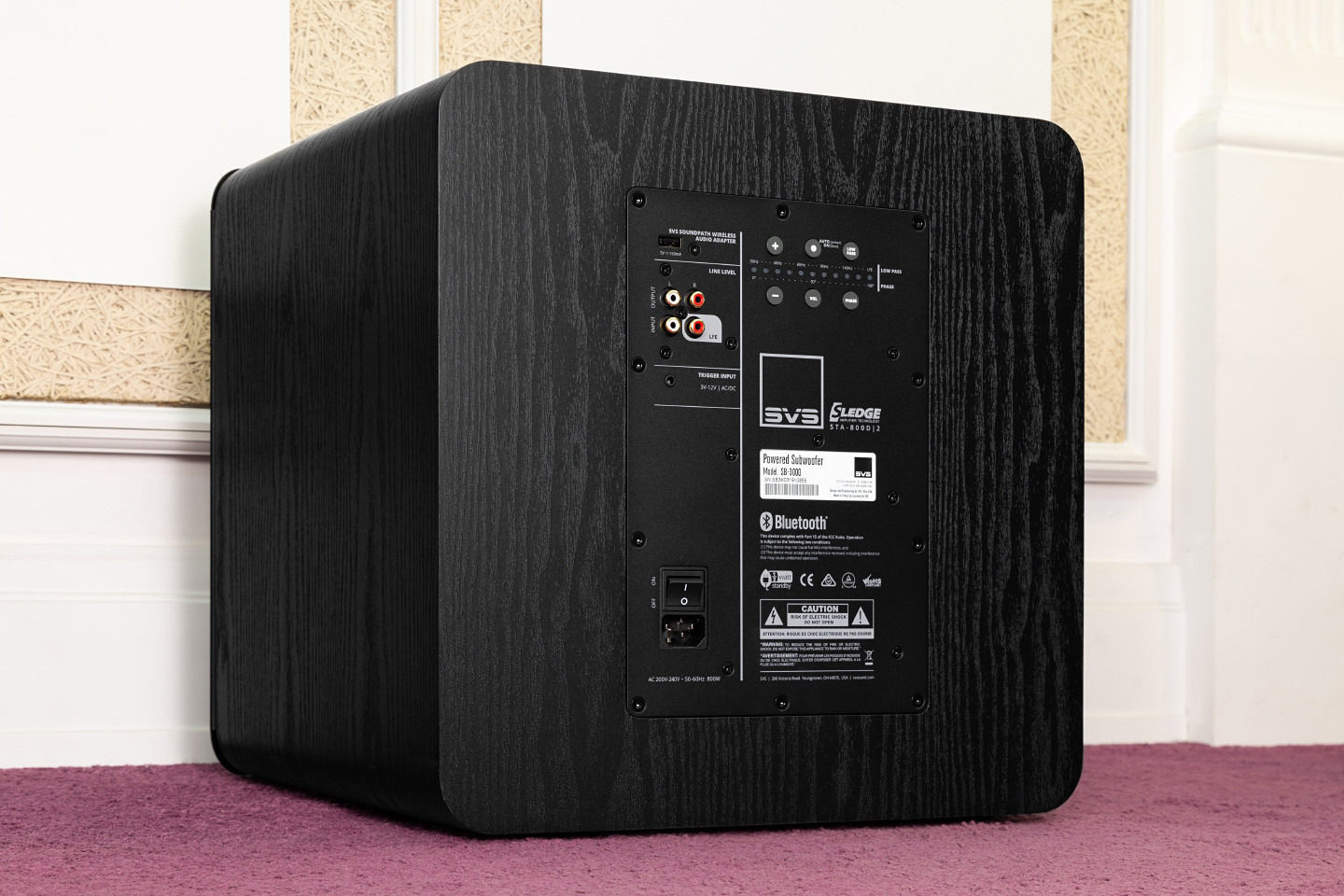
The speaker is driven by a proprietary 800-watt Sledge Class D amplifier, capable of delivering 2.5 kW at peak. All this is enclosed in a fairly compact MDF case, and the entire system is controlled by an Analog Devices DSP processor with a frequency of 50 MHz. The device is controlled from the rear panel, where all the controls and simple indicators in the form of LEDs are located. However, it is most convenient to configure the device through the application, which is discussed below. SVS SB-3000 Subwoofer
The SB-3000’s connectivity is fairly simple – exclusively low-level connections in both mono and stereo. There are also low-level outputs if you want to connect several subwoofers in a row. There’s also a USB port on the back panel for connecting a wireless receiver, which is supplied separately. It’s a shame I didn’t get a chance to check it out – people often decide that there’s nowhere to put a subwoofer except behind the sofa, and no one thought of putting the wires there in advance.
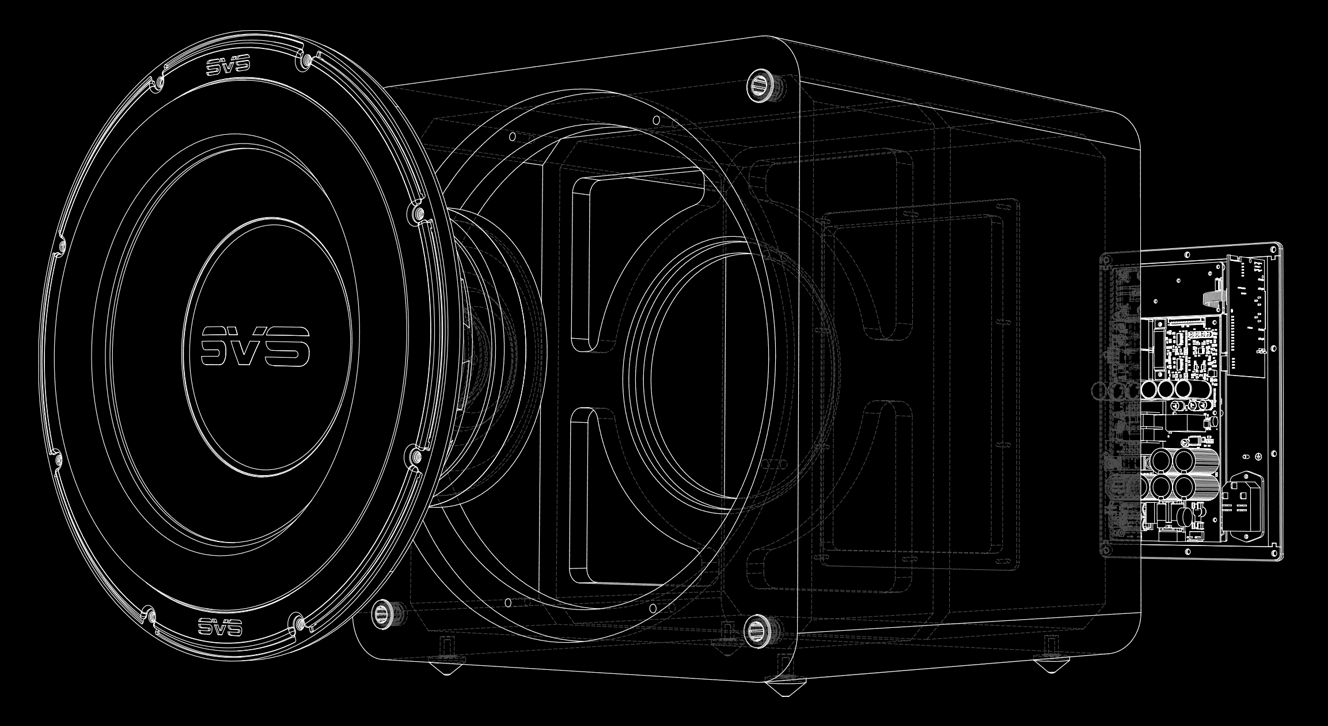
The subwoofer is available in one color: black veneer (in fact, a high-quality film “under the veneer”) and black lacquer.
Application
I decided to set up the system using a modern method — an app. SVS’s app is not colorful or rich, but it is simple and understandable even for a user who is not particularly familiar with technical terms. The app detects subwoofers itself (it works via the BLE protocol) and connects to it very quickly. When you restart the app, it automatically connects to the device.
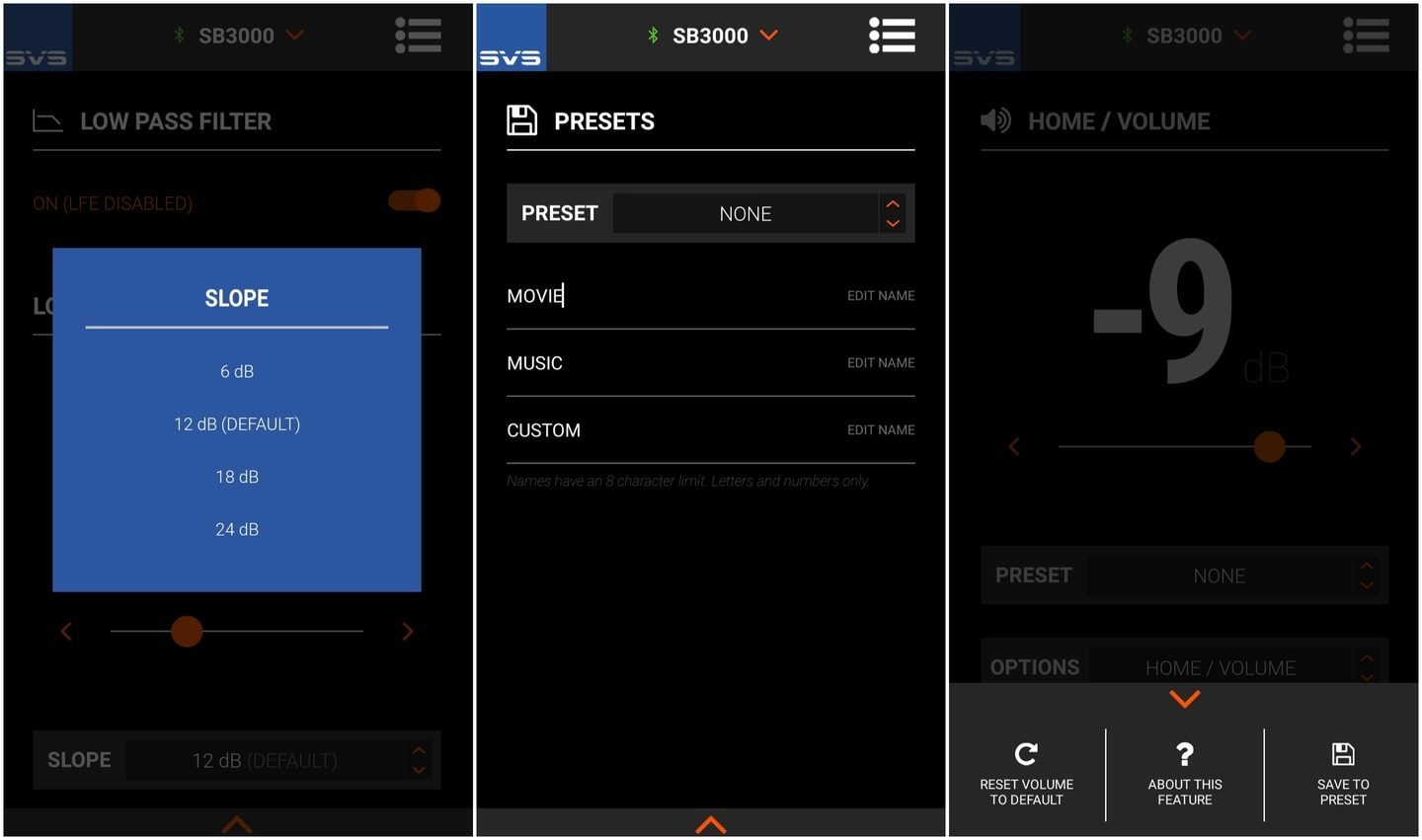
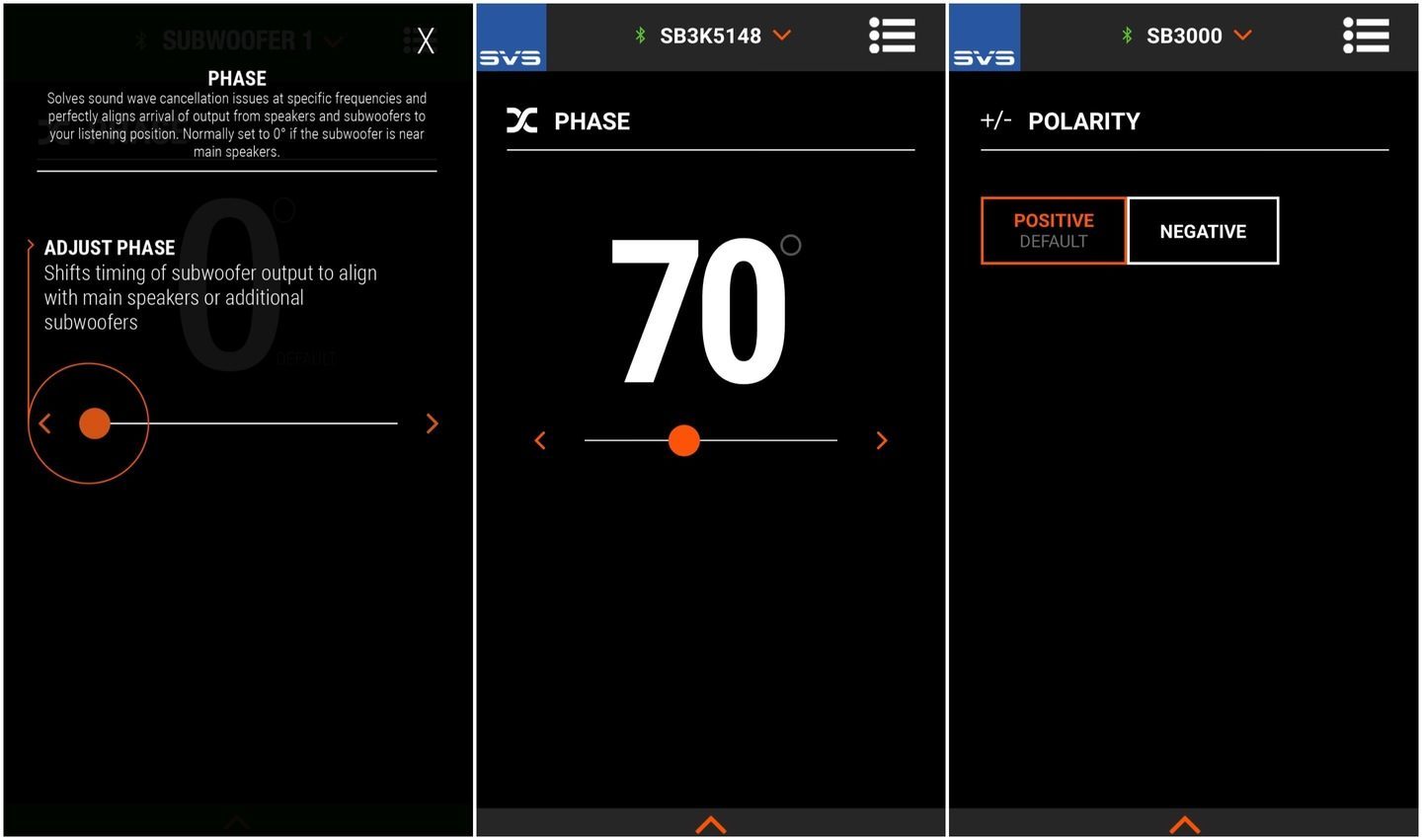
I won’t mention the standard adjustments such as phase and volume, but I will tell you about the features. The most important one is the three-band equalizer, which can be used to adjust the frequency response. Interestingly, with its help, it was possible to remove the resonance that made the air conditioner cover rattle in the listening room. It happened completely by accident – during the experiments. In general, the thing is rather useful, but it is not a fact that it is in demand – no automatic tuning systems are provided in the SB-3000.
There is also a room gain compensation function, where you can select the frequency and slope of the cutoff – this can also help combat room resonances or boomy bass. The application has three preset options, the names of which can be changed – unfortunately, it is impossible to enter Russian letters. SVS SB-3000 Subwoofer


What is very nice and valuable is that each item in the application is equipped with built-in simple and clear help (in English) and there is a separate “training”. The reaction to all changes is almost lightning-fast – the application works quickly and reliably.
When using several subwoofers in a system, their identification is possible by serial numbers. In addition, they can be renamed, but the names, again, will have to be specified in Latin.
Low-frequency meat
The SVS SB-3000 was connected to a system with a Denon AVR-X4500H AV receiver and DALI Oberon speakers. I saved my favorite Terminator: Genisys for last, and decided to check the manufacturer’s claims about incredible bass with my own feelings about “low-frequency meat” based on the film Hacksaw Ridge, where the “meaty” sound and image (pieces of meat fly around deliciously in the scene of storming the heights) in the literal sense of the word. SVS SB-3000 Subwoofer
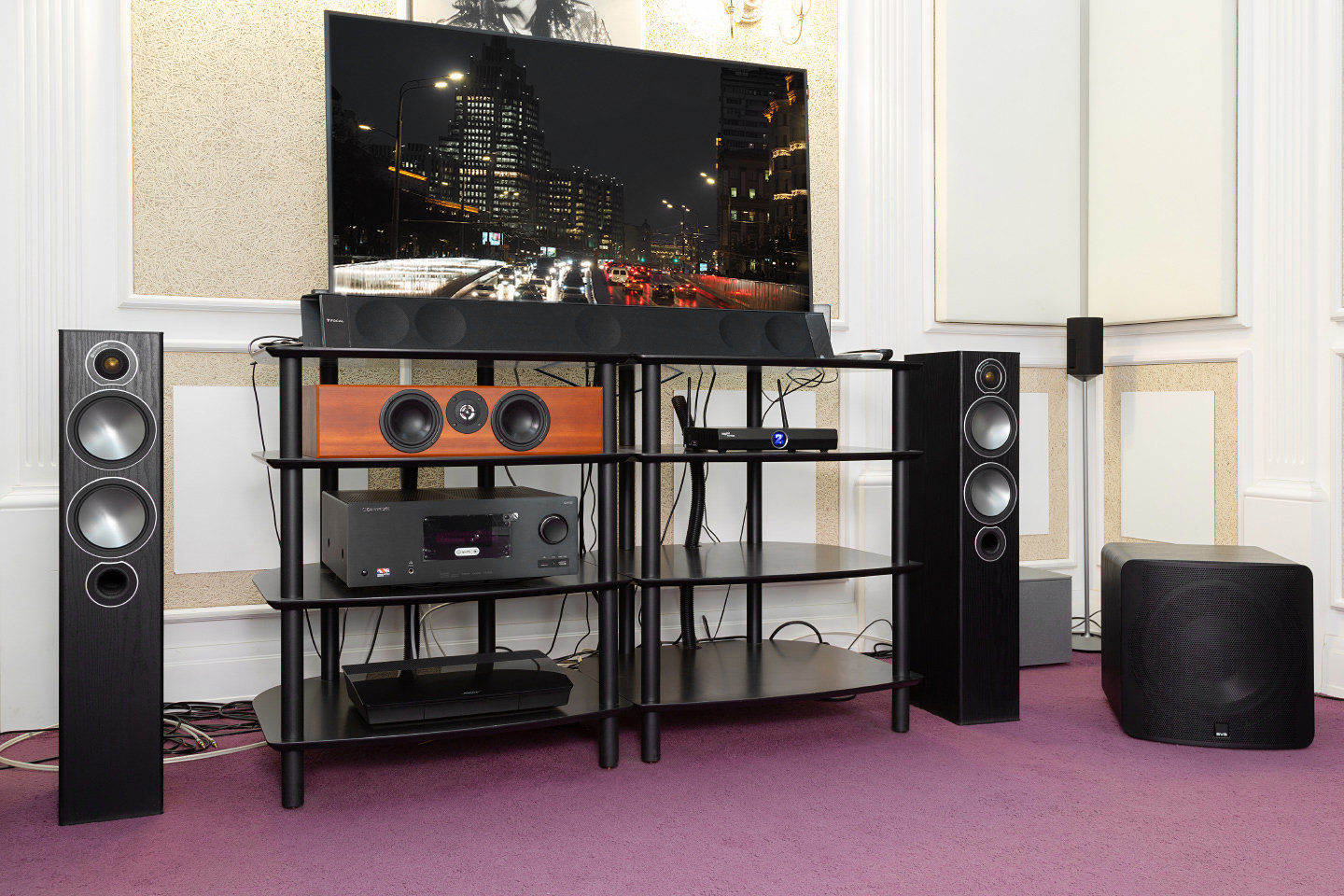
Power and strength are the first impressions from watching the above-mentioned scene. A 25 sq. m. room is filled with some kind of hurricane – I, sitting about 2.5 meters from the subwoofer, really felt the wind blowing on my legs! The bass from the SB-3000 fills the entire room, and if for less powerful devices you usually want to put two subwoofers in opposite corners of the room, then in this case one was enough. I can’t say that it got to the giblets (I would have liked more depth), but the pressure and scale – that’s what you need! The 42-inch Loewe installed in this room did not match the scale of the sound stage – I immediately wanted a big screen and a projector.
The bass is fast enough, not boomy (although this is partially due to the treated room), large-scale. It is big and cool, but if you compare it with subwoofers of a different level, it is not as structured and elegant (however, other manufacturers want more money). Although SVS hints that we are kings in cinema and specialists in music, I believe that a proper audiophile subwoofer must necessarily have a high-level input – the SB-3000 does not have it, as well as a balanced connection. But this is lyricism on the hackneyed topic of “why pay twice as much” – there is a reason, it all depends on the tasks. If the task is to build a powerful, spectacular cinema – here SVS, of course, comes out as king. And there is no particular point in looking for nuances and talking about high matters in a mid-level home theater.
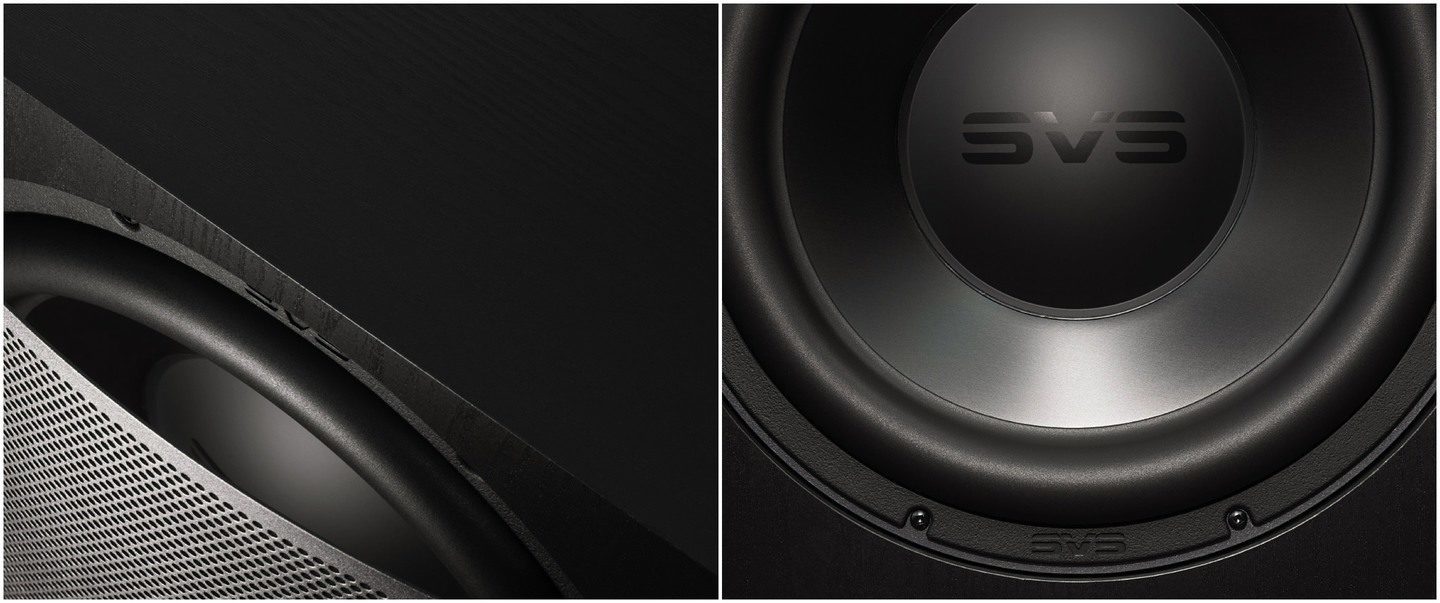
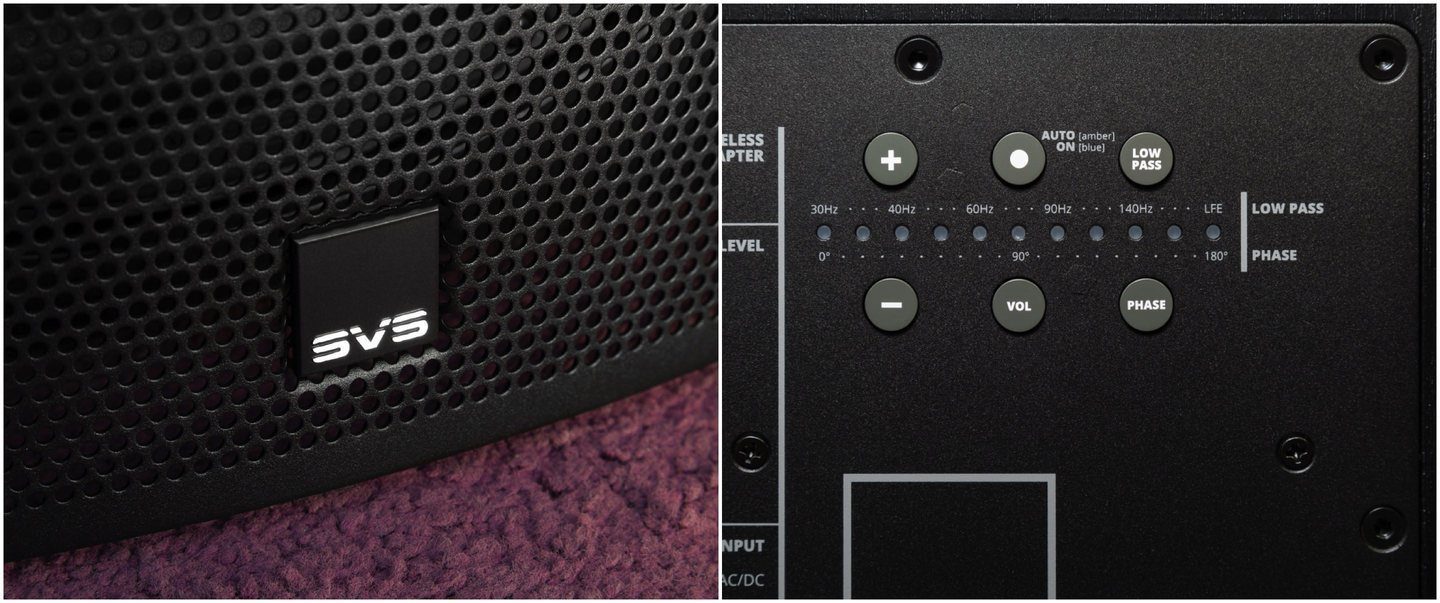
I moved on to the familiar Terminator and didn’t even notice how I enjoyed watching not only the episode with the race on the bridge but also a little further – everything is in place, everything is as it should be. I repeat: spectacular and with good dynamics. This is exactly what you expect when watching a modern action movie – to enjoy the effects and the scale of the action taking place on the screen. SVS SB-3000 Subwoofer
Conclusion
The SB-3000 will fit perfectly into the vast majority of cinemas, where it will be enough for a room of up to 30-40 sq.m. It is not as massive as you would expect, looking at the specifications and actual capabilities – this makes placement easier if we are talking about cinemas created in general-purpose rooms (cinemas are usually designed only for a specific task, and the equipment there is already a different class).
It’s very easy to operate, and easy to customize, and the SVS app is the best I’ve seen in this segment so far.

The main question is: is it worth buying the SB-3000? If you are building a home theater, then definitely yes. It will be a great choice, and you are unlikely to be disappointed even in a medium-sized room. For larger rooms, you can buy a couple of subwoofers, and this will be more effective than one more powerful one.
Specification
Advantages: Powerful, effective bass with relatively small dimensions, excellent application, and high-quality finishing (although only in two versions).
Flaws: There are no high-level or balanced inputs.
Price: 139,990 rubles
Passport details
Acoustic design: closed
Speaker: 13 inches (aluminum), long excursion
Frequency range: 18–270 Hz
Amplifier: 800 W (2.5 kW peak)
Controls: Gain, Cutoff, Phase, Room Gain Compensation, EQ, Polarity
Inputs: two pairs of RCA
Outputs: two pairs of RCA
Dimensions: 397x385x451 mm
Weight: 24.7 kg



